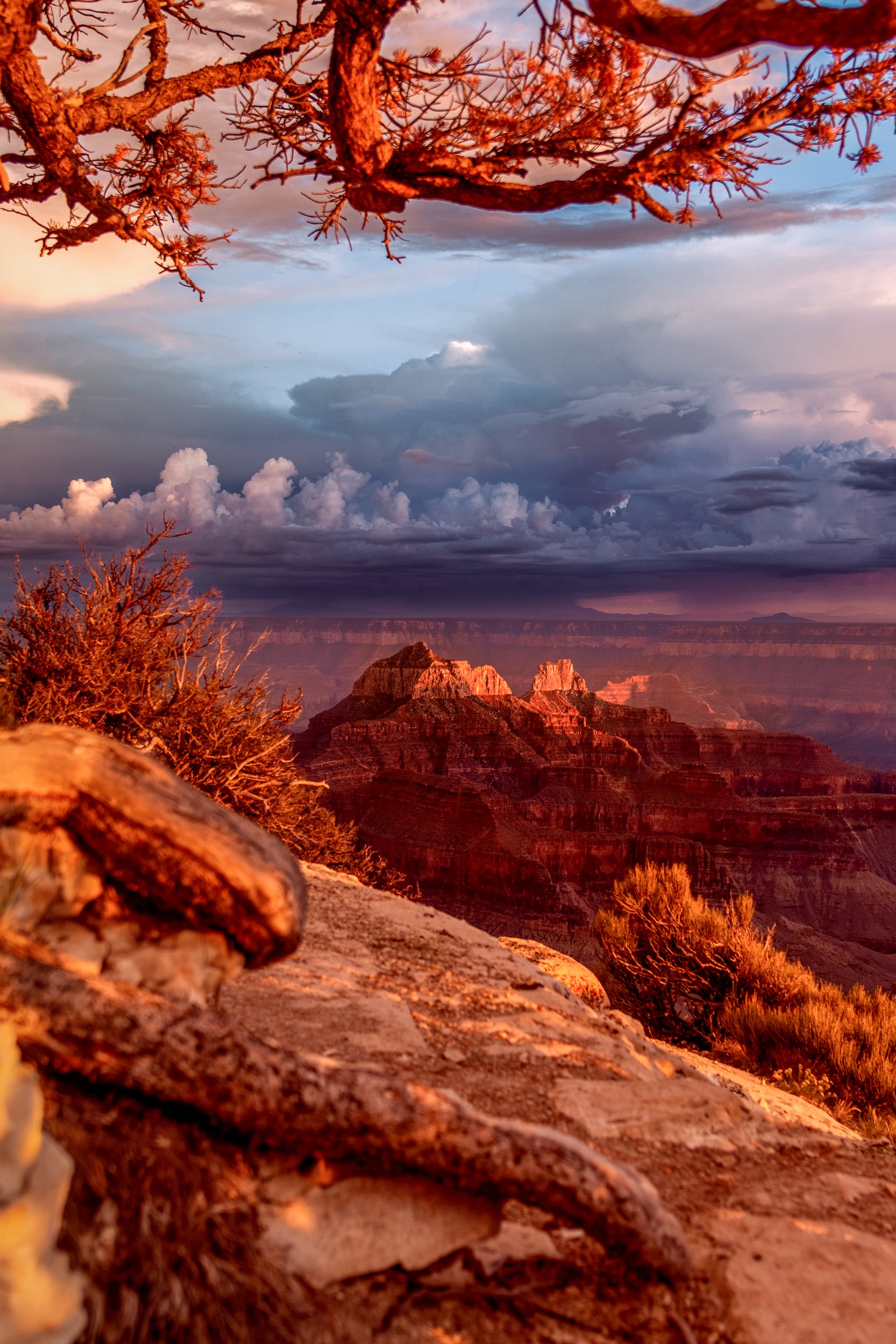SHOOTING AT GRAND CANYON
Never has a canyon been more aptly named than The Grand Canyon.
When you first arrive on either the South or North rims, you’re prepared for something seismic. You’ve probably seen a thousand photographs of this place and heard tales of its ‘jaw-dropping’ size and ‘majestic viewpoints’. You’ve also been teased along the journey by glimpses of Vermillion Cliffs or the Kaibab National Park.
You may have heard that a cool twenty miles separates the two rims as the vulture flies, and that you’ll most likely find yourself surrounded by 360 degrees of awesome!! It may be only 20 miles from side to side, but if you want to drive to the North Rim from the South, it’s a cool 211 miles … and because of that the North Rim is way less crowded than the South.
Rather like arriving at Burning Man for the first time, nothing will prepare you for the sheer scale of The Grand Canyon. This place is so enormous it cultivates its own weather systems … so while you might be wearing three layers and sheltering from strong winds and rain on the north side, down at the bottom where the Colorado River rages, it may be over 100F and sweltering.
One of the biggest challenges of photographing it in the summer months is that it’s almost constantly hazy with a mix of pollution and airborne particles, which makes it hard to capture tack-sharp detail. Then there’s the ever-changing light, especially at the start and end of the day (which is when you really want to be out and shooting), not to mention the fact that this place has a ridiculous amount of dynamic range (the difference between the lightest and darkest tones).
The weather can also turn on a dime - harsh sunlight and charcoal shadows can give way to sun-kissed gold, and storms can creep up on you, vicious and unannounced. Equally, some of the best views can be behind you. My daughter pointed out this amazing rainbow while I was busy focusing on something that had caught my eye in the opposite direction.
All these challenges aside, it’s an awe-inspiring place to visit, camera or no camera … but when storms kick off on the opposing rim, well that’s the honeypot at the end of the lightning strike - especially when it’s dark enough to also capture a small part of the milky way!




